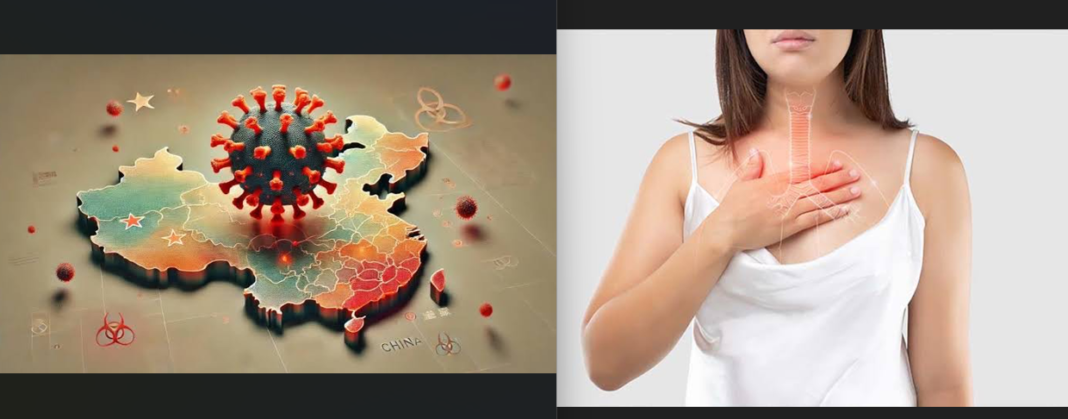Often overshadowed by influenza and RSV, HMPV is a common cause of respiratory infections worldwide, posing heightened risks for young children, the elderly and individuals with underlying health conditions. From its symptoms and prevention strategies to its seasonal surge and impact on vulnerable groups, the experts share insights to help readers better understand and combat this often-overlooked virus. In an exclusive interaction with The Pioneer, leading healthcare experts shed light on Human Metapneumovirus (HMPV), a lesser-known yet significant respiratory virus that surfaces during late winter and early spring.
Human Metapneumovirus (HMPV), though lesser-known compared to influenza or respiratory syncytial virus (RSV), is a common respiratory pathogen that affects people worldwide, particularly during late winter and early spring. Its symptoms—runny nose, cough, sore throat, fever and in severe cases, wheezing and difficulty breathing—often mimic other respiratory viruses, making it harder to diagnose without specific tests.
As cases of HMPV increase during colder months, experts emphasize the importance of awareness, preventive measures, and supportive care to minimize its impact, especially on vulnerable populations.
Dr. K.P. Balaraj, Consultant, Internal Medicine at SPARSH Hospital, RR Nagar, explains, “HMPV is not a mysterious virus—it’s a respiratory pathogen we encounter every year. Most healthy people recover within a week or two, but the virus poses a higher risk for young children, the elderly, and those with weakened immune systems, leading to complications like pneumonia or bronchitis.”
Why HMPV often goes undiagnosed
HMPV frequently overlaps with flu and RSV infections, which can result in its impact being underestimated. Dr. Balaraj adds, “The reason HMPV seems unfamiliar to many is its overlap with the flu and RSV. Without specific tests, we often attribute its effects to other respiratory illnesses. The absence of a dedicated vaccine or antiviral treatment for HMPV makes prevention crucial.”
Simple preventive measures, such as frequent handwashing, wearing masks in crowded areas, and avoiding close contact with infected individuals, can significantly reduce its spread. Supporting the immune system through a nutrient-rich diet, including foods high in vitamin C, zinc and probiotics, can also aid recovery and boost respiratory health.
HMPV’s impact during winter
Winter months see a spike in respiratory illnesses, creating an environment where viruses like HMPV thrive. Cold weather exacerbates pre-existing respiratory conditions such as asthma, chronic obstructive pulmonary disease (COPD), and chronic bronchitis, making individuals with these conditions more vulnerable.
Dr. Sandeep Katiyar, Senior Consultant, Pulmonology at Apollo Spectra Hospital, Kanpur, warns, “HMPV thrives during colder months when respiratory viruses are at their peak. Confined indoor environments and poor ventilation during winter create ideal conditions for HMPV to spread through respiratory droplets.”
He advises those at higher risk, particularly the elderly and individuals with chronic respiratory conditions, to take proactive measures, including maintaining indoor air quality, wearing masks in crowded spaces, and avoiding close contact with sick individuals. “Early diagnosis and treatment can prevent severe complications, especially in high-risk groups,” Dr. Katiyar emphasises.
Unique risk to children
Children, especially infants and toddlers, are among the most vulnerable to HMPV due to their developing immune systems and smaller airways, which can make it harder to cope with the inflammation caused by the virus.
“HMPV is a significant cause of respiratory infections in children,” says Dr. Rahul Khanna, Senior Consultant, Internal Medicine at Apollo Spectra Hospital, Karol Bagh, Delhi. “This virus often manifests as cold-like symptoms but can progress to more severe conditions like croup, bronchiolitis, or pneumonia, leading to hospitalization. Parents should be cautious if their child develops wheezing, difficulty breathing, or persistent high fever.”
Children with pre-existing respiratory conditions, such as asthma, or those born prematurely are at an even greater risk of severe complications. Dr. Khanna advises parents to ensure proper hand hygiene, sanitise toys and surfaces, and avoid crowded public places during peak viral seasons. “In the absence of a vaccine, proactive care and timely medical attention are the most effective strategies to protect children from HMPV,” he adds.
Prevention and awareness
are key
While HMPV may not be as widely discussed as influenza or RSV, its prevalence and impact, particularly on vulnerable populations, highlight the need for greater awareness. Preventive measures, supportive care and early medical intervention can help reduce the risk of severe complications and ensure better outcomes for those affected.
As Dr. Balaraj concludes, “Though HMPV may not be as widely discussed, it is a virus we encounter regularly. Awareness and timely action—through preventive measures and supportive care—are essential in mitigating its effects.”




